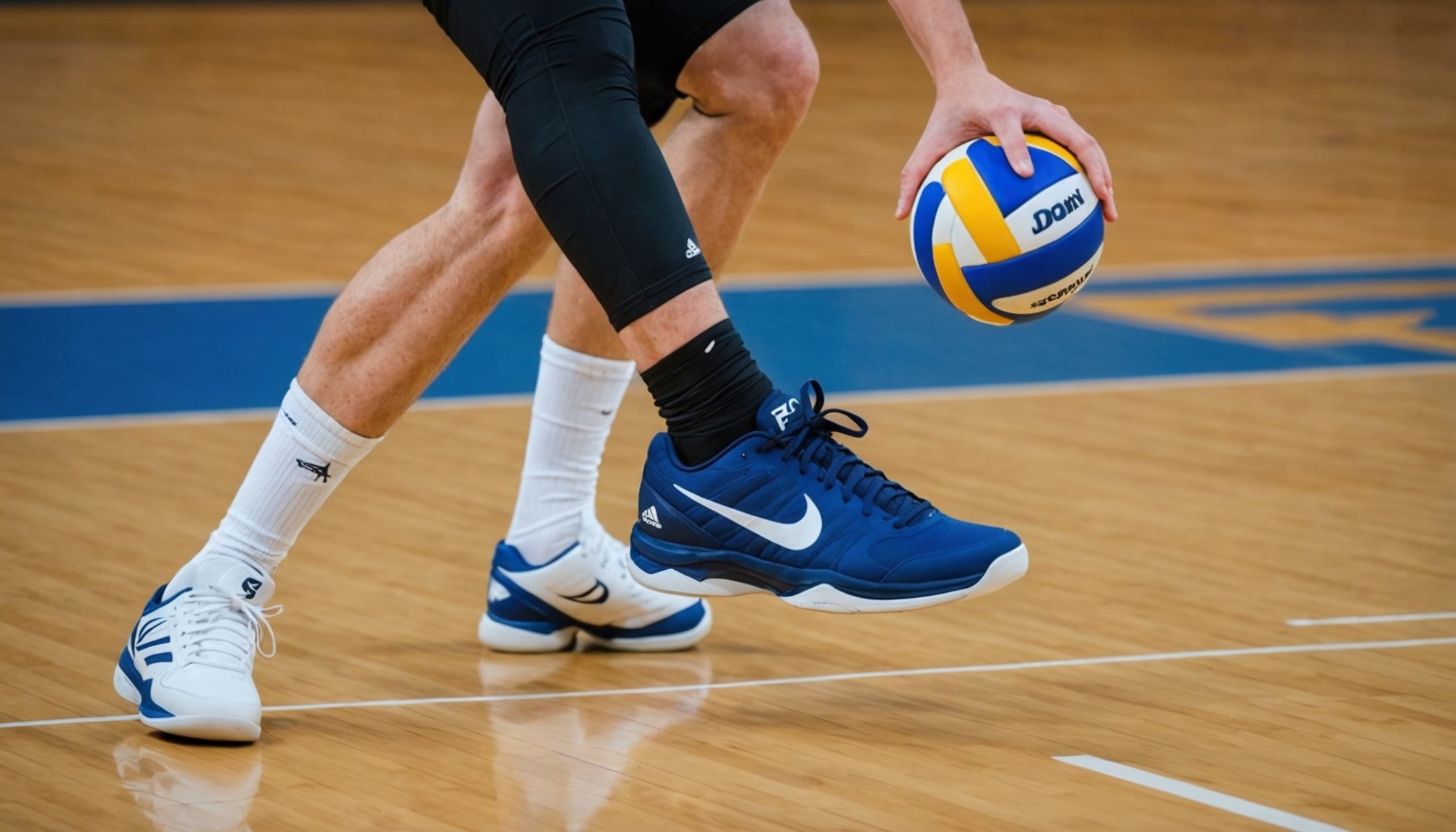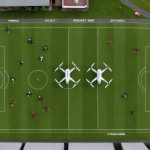Importance of Ankle Stability in Volleyball
Ankle stability plays a pivotal role in enhancing both volleyball performance and reducing the risk of injuries. In volleyball, athletes frequently engage in movements like jumping, landing, and rapid direction changes, which rely heavily on ankle stability. Without strong and stable ankles, players are more prone to injuries that can impair their performance.
Impact on Volleyball Performance
A stable ankle provides a solid foundation for executing explosive movements and maintaining balance during play. This is crucial for players aiming to make powerful jumps and quick lateral movements. Improved ankle stability allows athletes to perform at their best, with increased agility and precision on the court.
Topic to read : Maximizing Off-Season Success: Essential Training Adjustments for Tennis Players
Injury Statistics
Statistical analyses reveal that ankle injuries are quite common in volleyball, accounting for a significant percentage of total injuries among athletes. Many of these injuries occur due to inadequate ankle stability. Injury prevention strategies, focusing on strengthening the ankle, are key to reducing the incidence of these injuries and keeping players in top form.
Role in Overall Athletic Performance
Beyond volleyball, ankle stability is a cornerstone of _overall athletic performance*. It ensures that athletes can move with confidence and control, minimizing the risk of falls and other injuries. By investing in ankle _stability*, athletes not only bolster their volleyball performance but enhance their capabilities across various sports disciplines.
Also to read : Ultimate Guide for Lacrosse Players: Tailoring Training to Dodge ACL Injuries
Strength Training Exercises for Ankle Stability
Strength training plays a crucial role in enhancing ankle stability, which is vital for athletes, particularly in sports like volleyball that demand rapid movements and agility. Focusing on ankle strengthening not only reduces injury risks but also improves overall performance.
A variety of resistance exercises can be employed to target the ankle area. Calf raises, for instance, are an effective exercise that targets the lower leg muscles, providing stability to the ankle joint. To perform calf raises, athletes stand on the edge of a step, heels off the edge, and rise onto their toes. This movement engages and strengthens the stabilising muscles around the ankle.
Another beneficial exercise is the ankle dorsiflexion with a resistance band. In this exercise, the band is looped around the forefoot while the athlete slowly pulls the toes toward the shin, working against the band’s resistance. This enhances the anterior tibial muscles, critical for ankle stability.
Incorporating these resistance exercises into a regular training routine encourages consistent improvements in ankle stability. Athletes can integrate these exercises during their warm-up or as a separate strength session. Regular practice not only builds muscle tone but also enhances proprioception, enabling athletes to maintain balance and perform movements more safely and efficiently on the court.
Balance Drills to Enhance Stability
Balance drills are a fundamental part of improving athletic performance, particularly for sports like volleyball. These drills are designed to enhance ankle stability and build a strong foundation for advanced movements. A strong emphasis on proprioception and coordination exercises can lead to superior performance on the court.
Effective balance drills for ankle stability include single-leg stances, where athletes stand on one leg with eyes closed to challenge proprioception. This practice not only strengthens the muscles around the ankle but also sharpens neuromuscular responses, critical for quick movements and reactions needed in volleyball.
The relationship between balance and proprioception is crucial. Proprioception, the body’s ability to sense movement, action, and location, directly impacts coordination. In volleyball, athletes must make rapid adjustments. Enhanced proprioception through consistent practice of drills ensures fluid and precise actions during gameplay.
For athletes looking to progress their balance drills, incorporating dynamic elements is key. For example, adding a medicine ball toss while standing on one leg increases difficulty and engages the core. Advanced athletes can benefit from exercises on unstable surfaces like a balance board or a Bosu ball, both of which intensify the challenge and further promote stability.
These structured approaches build a solid platform for players to significantly enhance their game performance through balance drills.
Flexibility Routines for Injury Prevention
Flexibility plays a crucial role in maintaining ankle health, significantly reducing the risk of injuries. The importance of incorporating stretching routines specifically targeting the ankle and surrounding muscles into your daily regimen cannot be overstated. Ensuring that your ankles have a full range of motion helps in fortifying them against strains, sprains, and fractures.
One recommended stretching routine involves the calf stretch. This can be done by leaning against a wall, with one leg extended back while keeping the heel flat on the ground. This routine targets the muscles at the back of the lower leg, promoting ankle flexibility. Additionally, the ankle alphabet exercise, where you ‘write’ each letter of the alphabet with your foot, can enhance the range of motion and strengthen the ligaments surrounding the joint.
Flexibility is not only about stretching but is integral to injury prevention strategies. Stretching increases blood flow, reduces muscle stiffness, and prepares the body for physical activity. Regular flexibility routines contribute to a healthier musculoskeletal system, allowing individuals to move more efficiently and with less discomfort. Incorporating these into your fitness plan is a proactive approach to safeguard against potential injuries.
Recommended Practices and Protocols
Implementing injury prevention protocols is paramount in volleyball training programs to ensure athletes’ safety, particularly concerning ankle stability. These best practices form the backbone of maintaining physical health and enhancing performance. Focusing on ankle stability training within volleyball training programs can reduce the incidence of sprains and other related injuries. Exercises such as balance drills, proprioception exercises, and plyometrics are crucial.
When an ankle injury does occur, following structured protocols for returning to play is essential for optimal recovery and reducing the risk of re-injury. Typically, these protocols involve a phased approach: starting with rest, followed by gradual strengthening exercises, and finally, sport-specific drills before a full return to the court. This gradual progression ensures that the athlete regains full functional movement and confidence.
Experts unanimously agree on the effectiveness of comprehensive recovery strategies but caution against common pitfalls, such as rushing the recovery process. It is crucial to focus not only on the injured area but also on the overall body mechanics and conditioning to ensure a balanced approach to rehabilitation. Learning from seasoned professionals can provide invaluable insights into the most effective strategies and help avoid typical mistakes that could hinder an athlete’s full recovery.
Visual Aids and Resources
In the world of volleyball, visual aids play a crucial role in enhancing the understanding of exercises and techniques. From training videos to detailed instructional guides, these resources are invaluable for athletes aiming to improve their game. Let’s explore the various types of visual aids available.
Training videos are among the most effective tools for volleyball athletes. They provide detailed demonstrations of drills and exercises, allowing players to observe proper form and execution. Quality training videos, such as those made by professional coaches, illustrate techniques step-by-step with simultaneous explanatory commentary, providing a comprehensive learning experience.
Visual resources, including diagrams and animated models, can help athletes visualize complex plays and positioning. They simplify the learning process by breaking down movements into easily digestible segments. Platforms like YouTube and sports-specific websites offer a plethora of such resources to cater to different learning preferences.
To maximize the benefits of these resources, athletes should actively use them to monitor their progress. Recording oneself during practice and comparing it to training videos can highlight areas for improvement. This method not only aids in perfecting technique but also empowers athletes to self-correct and adapt. Together, these visual aids and resources provide a robust framework for mastering volleyball skills.











